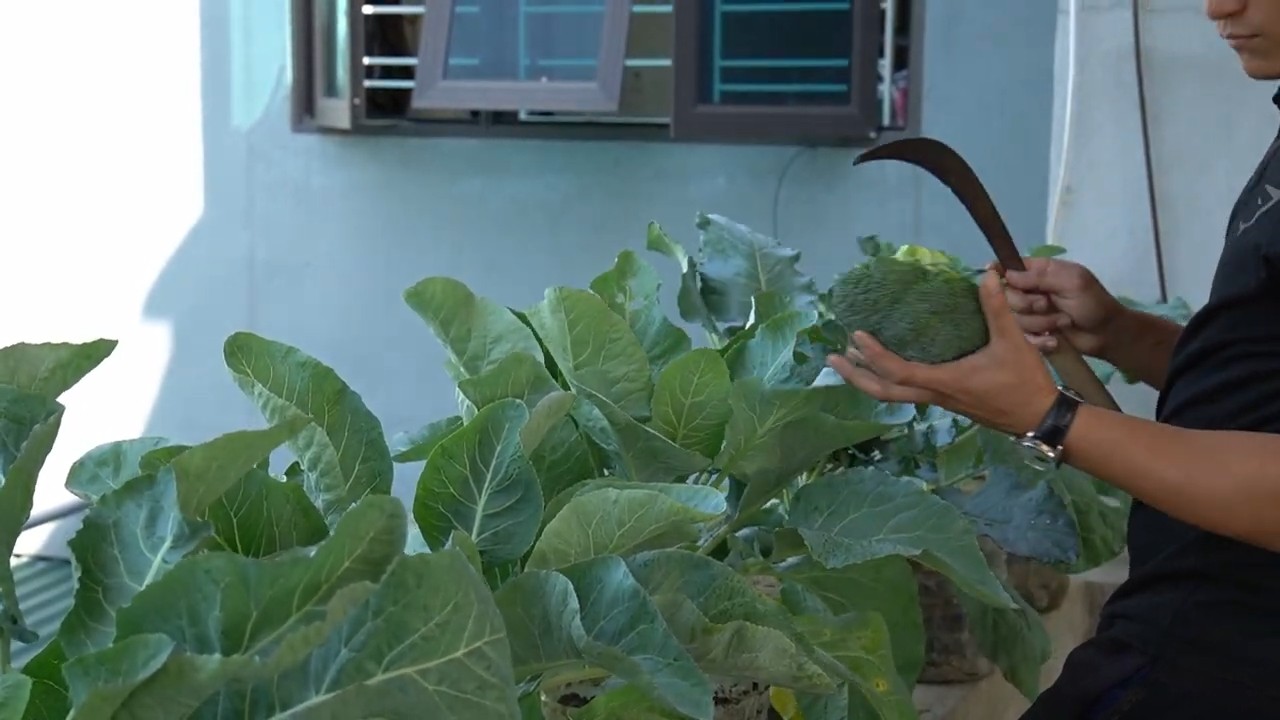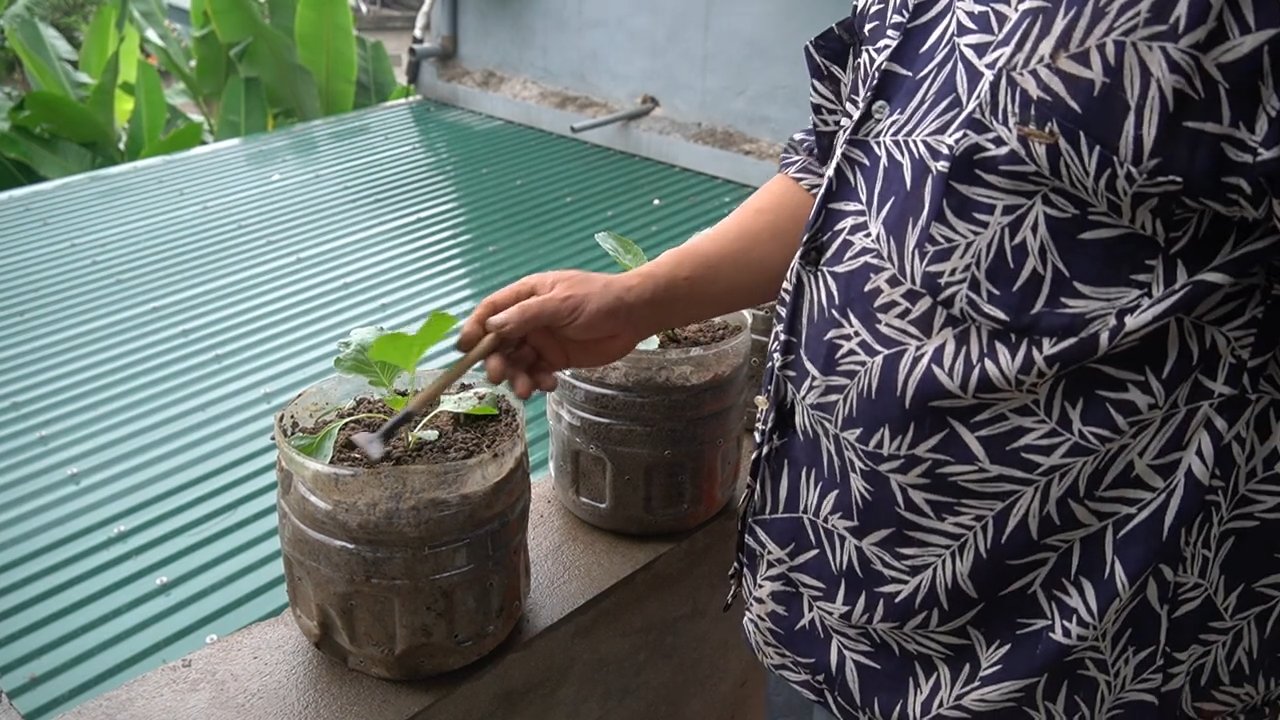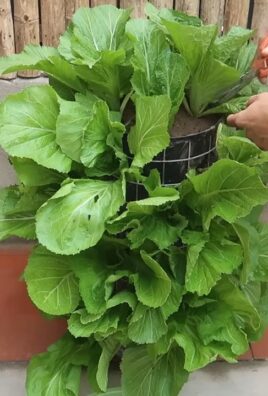Growing Cauliflower and Corn Easy: Imagine stepping into your backyard and harvesting plump, juicy corn on the cob and perfectly formed heads of cauliflower, all grown with your own two hands. Sounds like a dream, right? Well, it doesn’t have to be! For centuries, cultures around the world have cultivated these two nutritional powerhouses, from the ancient civilizations of the Mediterranean who cherished cauliflower to the indigenous peoples of the Americas who revered corn as a sacred gift.
But let’s be honest, sometimes the thought of growing your own food can feel a little daunting. That’s where these easy DIY tricks and hacks come in! I’m here to share some simple, effective methods that will take the mystery out of growing cauliflower and corn easy, even if you’re a complete beginner.
Why do you need these tricks? Because fresh, homegrown produce tastes infinitely better than anything you can buy at the store. Plus, you’ll know exactly what’s gone into your food – no pesticides, no hidden ingredients, just pure, delicious goodness. And let’s not forget the satisfaction of nurturing a plant from seed to table. So, grab your gardening gloves, and let’s get started on this exciting journey to a more bountiful and rewarding garden!

Growing Cauliflower and Corn: A Beginner’s Guide to a Bountiful Harvest
Hey there, fellow gardening enthusiasts! I’m so excited to share my tried-and-true methods for growing cauliflower and corn. These two veggies might seem a little intimidating at first, but trust me, with a little planning and some simple steps, you can have a thriving garden bursting with fresh, homegrown goodness. Let’s dive in!
Choosing the Right Varieties
Before we even think about planting, it’s crucial to pick the right varieties for your climate and growing conditions. This can make a huge difference in your success!
* Cauliflower: Look for varieties that are known for their heat tolerance if you live in a warmer climate. ‘Snowball’ is a classic choice, but ‘Cheddar’ (orange) and ‘Graffiti’ (purple) are fun options too! Consider the days to maturity as well – shorter season varieties are great if you have a shorter growing season.
* Corn: Sweet corn is the most popular choice for home gardens. ‘Silver Queen’ is a reliable white variety, while ‘Golden Bantam’ is a classic yellow. Again, pay attention to the days to maturity. Plant different varieties with staggered maturity dates to extend your harvest!
Preparing the Soil: The Foundation for Success
Good soil is the key to happy plants! Both cauliflower and corn are heavy feeders, meaning they need a lot of nutrients.
* Soil Testing: Ideally, get your soil tested to determine its pH and nutrient levels. Your local agricultural extension office can help with this.
* Amendments: Amend your soil with plenty of organic matter, such as compost, well-rotted manure, or leaf mold. This will improve drainage, water retention, and nutrient availability.
* pH: Cauliflower prefers a slightly acidic soil pH of 6.0 to 7.0, while corn prefers a pH of 6.0 to 6.8. Adjust your soil pH as needed based on your soil test results. Lime can raise the pH, while sulfur can lower it.
Starting Cauliflower Seeds Indoors (Optional but Recommended)
Starting cauliflower seeds indoors gives you a head start on the growing season, especially if you live in a cooler climate.
* Timing: Start seeds about 4-6 weeks before the last expected frost.
* Containers: Use seed starting trays or small pots filled with seed starting mix.
* Sowing: Sow seeds about ¼ inch deep.
* Watering: Keep the soil consistently moist but not soggy.
* Light: Provide plenty of light, either from a sunny window or a grow light.
* Hardening Off: Before transplanting seedlings outdoors, gradually acclimate them to outdoor conditions over a period of 7-10 days. This process is called “hardening off.”
Planting Cauliflower and Corn
Now for the fun part – getting those plants in the ground!
Cauliflower Planting
1. Timing: Transplant cauliflower seedlings outdoors after the last expected frost, when the soil has warmed up to at least 60°F (15°C).
2. Spacing: Space plants 18-24 inches apart in rows that are 24-36 inches apart.
3. Planting Depth: Plant seedlings at the same depth they were growing in their containers.
4. Watering: Water thoroughly after planting.
5. Mulching: Apply a layer of mulch around the plants to help retain moisture, suppress weeds, and regulate soil temperature.
Corn Planting
1. Timing: Plant corn seeds directly in the ground after the last expected frost, when the soil has warmed up to at least 60°F (15°C).
2. Spacing: Plant seeds 1-2 inches deep and 6-12 inches apart in rows that are 30-36 inches apart. Plant corn in blocks of at least four rows to ensure good pollination.
3. Watering: Water thoroughly after planting.
4. Thinning: Once the seedlings emerge, thin them to 12 inches apart.
Caring for Your Plants: Watering, Fertilizing, and Pest Control
Consistent care is essential for a successful harvest.
Watering
* Cauliflower: Cauliflower needs consistent moisture, especially during head formation. Water deeply and regularly, aiming for about 1-1.5 inches of water per week.
* Corn: Corn also needs plenty of water, especially during tasseling and silking. Water deeply and regularly, aiming for about 1-2 inches of water per week.
Fertilizing
* Cauliflower: Fertilize cauliflower every 2-3 weeks with a balanced fertilizer or compost tea.
* Corn: Corn is a heavy feeder and benefits from regular fertilization. Side-dress with a nitrogen-rich fertilizer when the plants are about 12 inches tall and again when the tassels appear.
Pest Control
* Cauliflower: Common cauliflower pests include cabbage worms, aphids, and flea beetles. Use row covers to protect young plants. Handpick pests or use insecticidal soap or Bacillus thuringiensis (Bt) for cabbage worms.
* Corn: Common corn pests include corn earworms, corn borers, and aphids. Check plants regularly for signs of infestation. Use Bacillus thuringiensis (Bt) for corn earworms and corn borers. Attract beneficial insects to your garden to help control aphids.
Blanching Cauliflower (Optional)
Blanching cauliflower involves covering the developing head to prevent it from turning yellow or brown. This results in a whiter, more tender head.
1. Timing: When the head is about 2-3 inches in diameter, gather the outer leaves around the head and secure them with twine or rubber bands.
2. Monitoring: Check the head regularly to ensure it’s not rotting or becoming discolored.
3. Harvesting: Harvest the head when it’s fully mature, about 7-12 days after blanching.
Harvesting Cauliflower and Corn
The moment we’ve all been waiting for!
Cauliflower Harvesting
1. Timing: Harvest cauliflower when the head is firm, compact, and about 6-8 inches in diameter.
2. Cutting: Cut the head from the plant with a sharp knife, leaving a few leaves attached to protect the head.
Corn Harvesting
1. Timing: Harvest corn when the silks have turned brown and dry and the kernels are plump and milky.
2. Checking: Peel back the husk slightly and puncture a kernel with your fingernail. If the liquid is milky, the corn is ready to harvest.
3. Harvesting: Twist and pull the ear of corn from the stalk.
Troubleshooting Common Problems
Even with the best planning, things can sometimes go wrong. Here are some common problems and how to address them:
* Cauliflower: Buttoning (small heads): This can be caused by stress, such as lack of water or nutrients. Ensure consistent watering and fertilization.
* Cauliflower: Yellowing heads: This can be caused by sun exposure. Blanch the heads to prevent yellowing.
* Corn: Poor pollination: This can be caused by lack of wind or insufficient planting density. Plant corn in blocks of at least four rows and consider hand-pollinating if necessary.
* Corn: Stunted growth: This can be caused by lack of nutrients or pests. Fertilize regularly and control pests.
Extending the Harvest
Want to enjoy cauliflower and corn for longer? Here are a few tips:
* Succession Planting: Plant new cauliflower and corn seeds every 2-3 weeks to extend the harvest season.
* Cold Frames: Use cold frames to protect cauliflower from frost and extend the growing season.
* Freezing: Freeze cauliflower and corn to enjoy them throughout the winter.
Enjoying Your Harvest
Now that you’ve harvested your beautiful cauliflower and corn, it’s time to enjoy the fruits (or vegetables!) of your labor. Cauliflower can be roasted, steamed, mashed, or used in soups and stews. Corn can be grilled, boiled, or creamed. The possibilities are endless!
I hope this guide has inspired you to grow your own cauliflower and corn. With a little patience and effort, you can enjoy a bountiful harvest of fresh, homegrown goodness. Happy gardening!

Conclusion
So, there you have it! Growing cauliflower and corn together isn’t just some whimsical gardening experiment; it’s a practical, space-saving, and mutually beneficial strategy that can significantly boost your harvest. We’ve explored how the tall corn stalks provide much-needed shade for the delicate cauliflower, protecting it from scorching sun and preventing premature bolting. In return, the cauliflower’s broad leaves act as a living mulch, suppressing weeds and conserving moisture in the soil, which benefits the corn. It’s a beautiful example of companion planting at its finest.
But the benefits extend beyond just the immediate yield. By intercropping these two vegetables, you’re also promoting biodiversity in your garden, attracting beneficial insects that can help control pests naturally. This reduces the need for harmful pesticides and creates a healthier, more sustainable ecosystem. Plus, let’s be honest, there’s something incredibly satisfying about maximizing the productivity of your garden space.
Don’t be afraid to experiment with different varieties of cauliflower and corn to find the perfect combination for your local climate and soil conditions. Consider trying colorful cauliflower varieties like purple or orange, which add a vibrant touch to your garden and offer unique nutritional benefits. For corn, look for varieties that mature at different rates to extend your harvest window. You could also incorporate other companion plants into the mix, such as beans or peas, which fix nitrogen in the soil and further enhance the growing environment.
This DIY trick of growing cauliflower and corn together is a game-changer for any gardener looking to optimize their space and increase their yields. It’s a simple yet effective technique that can transform your garden into a thriving, productive ecosystem.
We highly encourage you to give this method a try in your own garden. Start small, perhaps with a single row of corn and a few cauliflower plants, and observe the results. Take notes on what works well and what could be improved. Remember, gardening is a learning process, and every season brings new opportunities to refine your techniques.
And most importantly, we want to hear about your experiences! Share your successes, your challenges, and any variations you try in the comments below. Let’s build a community of gardeners who are passionate about sustainable and efficient growing practices. Together, we can unlock the full potential of our gardens and enjoy the delicious rewards of our labor. So, grab your seeds, get your hands dirty, and start growing cauliflower and corn together today! You won’t regret it.
Frequently Asked Questions (FAQ)
What are the specific benefits of growing cauliflower and corn together?
The primary benefits are mutual shading and weed suppression. Corn provides shade for cauliflower, preventing bolting in hot weather. Cauliflower’s broad leaves act as a living mulch, suppressing weeds and retaining soil moisture for the corn. This companion planting method also promotes biodiversity and attracts beneficial insects, reducing the need for pesticides. It’s an efficient use of garden space, maximizing yield from a single area.
What type of soil is best for growing cauliflower and corn together?
Both cauliflower and corn thrive in well-drained, fertile soil rich in organic matter. A slightly acidic to neutral pH (around 6.0 to 7.0) is ideal. Before planting, amend the soil with compost, well-rotted manure, or other organic amendments to improve its structure, fertility, and water-holding capacity. Regular soil testing can help determine if any nutrient deficiencies need to be addressed.
How far apart should I plant the corn and cauliflower?
The spacing depends on the specific varieties of corn and cauliflower you’re growing. Generally, plant corn in rows spaced 24-36 inches apart, with plants 8-12 inches apart within the row. Cauliflower should be planted between the corn rows, with plants spaced 18-24 inches apart. This allows adequate space for both crops to grow without overcrowding. Consider the mature size of each variety when determining spacing.
When is the best time to plant cauliflower and corn together?
The timing depends on your local climate and the specific varieties you’re growing. Corn is typically planted after the last frost when the soil has warmed up to at least 60°F (15°C). Cauliflower can be started indoors 6-8 weeks before the last frost and transplanted outdoors a few weeks after the corn has been planted. Alternatively, you can direct sow cauliflower seeds a few weeks after the corn has emerged. Staggering the planting times ensures that both crops have adequate time to mature.
How much water do cauliflower and corn need?
Both cauliflower and corn require consistent moisture, especially during periods of rapid growth and head formation. Water deeply and regularly, aiming to keep the soil consistently moist but not waterlogged. Mulching around the plants can help retain moisture and reduce the need for frequent watering. Monitor the soil moisture levels regularly and adjust watering accordingly, especially during hot, dry weather.
What are some common pests and diseases that affect cauliflower and corn, and how can I control them?
Common pests of cauliflower include cabbage worms, aphids, and flea beetles. Corn earworms and corn borers can damage corn. Diseases include clubroot in cauliflower and corn smut in corn. Implement preventative measures such as crop rotation, companion planting, and using row covers to protect plants from pests. Regularly inspect plants for signs of pests or diseases and take action promptly. Organic pest control methods, such as insecticidal soap or neem oil, can be effective. For diseases, ensure good air circulation and avoid overhead watering.
Can I grow other vegetables alongside cauliflower and corn?
Yes, several other vegetables can be grown alongside cauliflower and corn to further enhance the growing environment. Beans and peas are excellent companion plants for corn, as they fix nitrogen in the soil, benefiting both crops. Leafy greens like lettuce and spinach can be planted between the rows of corn and cauliflower to provide ground cover and suppress weeds. Herbs like dill and chamomile can attract beneficial insects and deter pests.
What are some tips for maximizing the yield of cauliflower and corn grown together?
To maximize yield, ensure that both crops receive adequate sunlight, water, and nutrients. Amend the soil with compost or other organic matter before planting and fertilize regularly with a balanced fertilizer. Monitor plants for pests and diseases and take action promptly. Harvest cauliflower heads when they are firm and compact, and harvest corn when the silks have turned brown and the kernels are plump and milky. Consider succession planting to extend the harvest window.
What if my cauliflower bolts prematurely?
Premature bolting in cauliflower is often caused by heat stress. Growing cauliflower and corn together can help prevent bolting by providing shade. If bolting occurs, you can still harvest the cauliflower, but the flavor may be slightly bitter. Choose heat-tolerant cauliflower varieties and provide adequate water and shade during hot weather to minimize the risk of bolting.
How do I know when my cauliflower is ready to harvest?
Cauliflower is ready to harvest when the head is firm, compact, and has reached the desired size. The head should be white or the color of the variety you are growing. Check the head regularly as it approaches maturity, as it can quickly become overripe. Use a sharp knife to cut the head from the plant, leaving a few leaves attached to protect it.




Leave a Comment